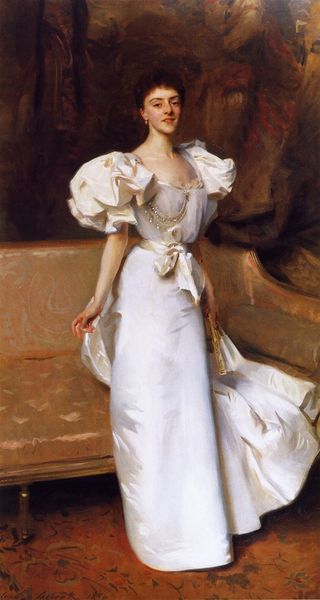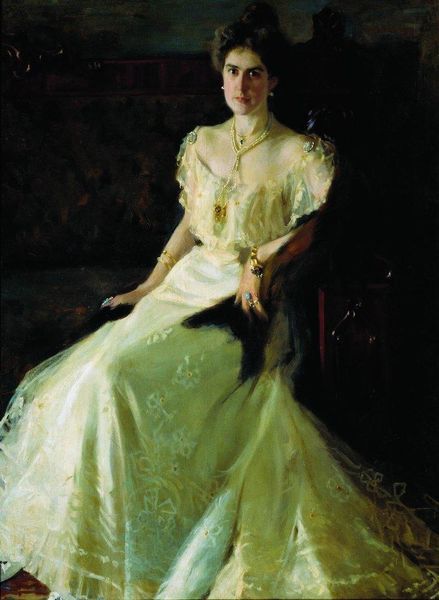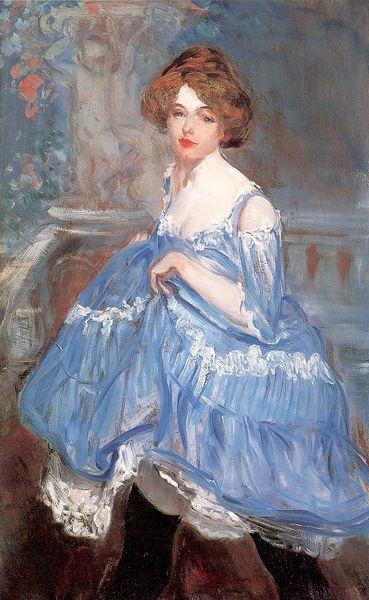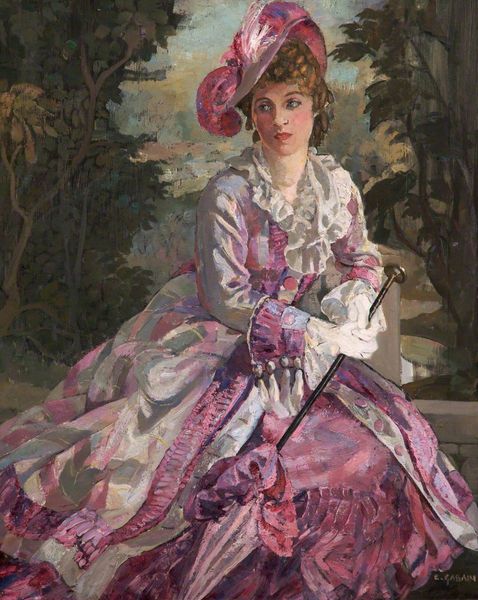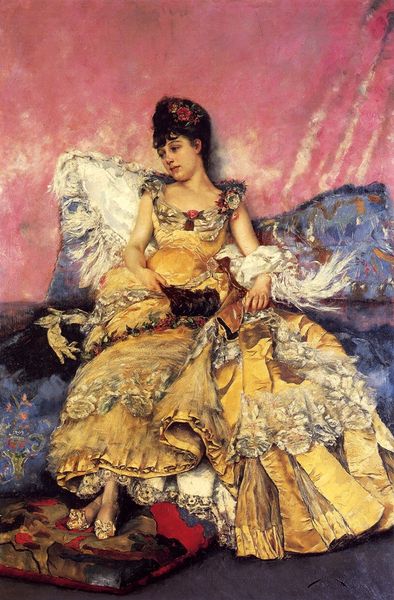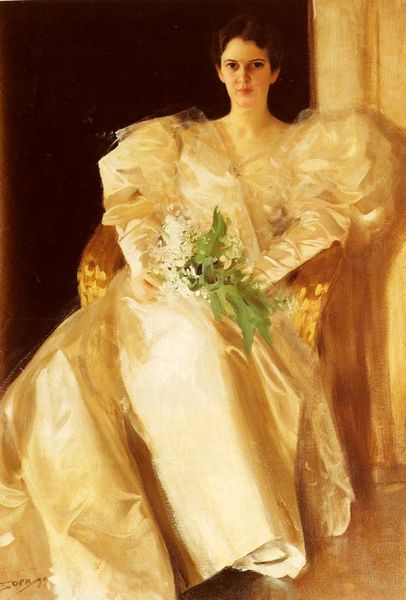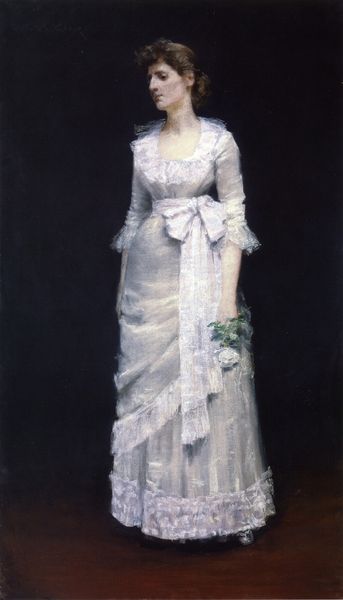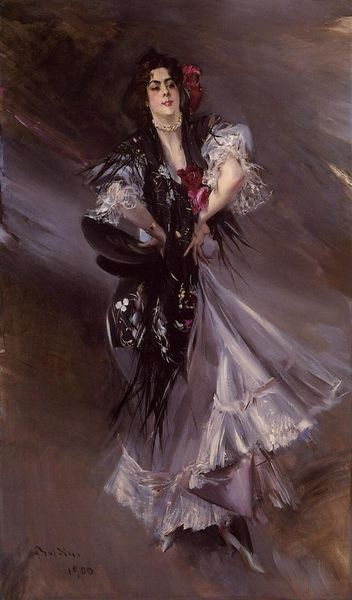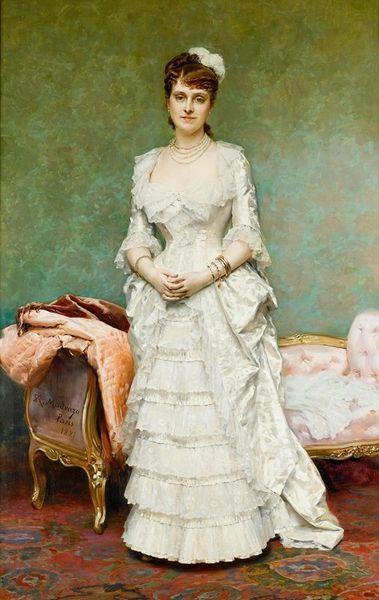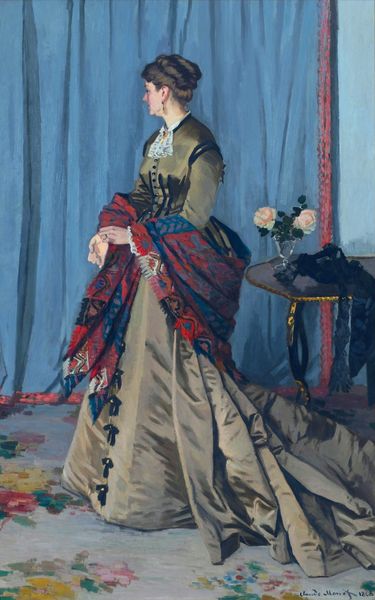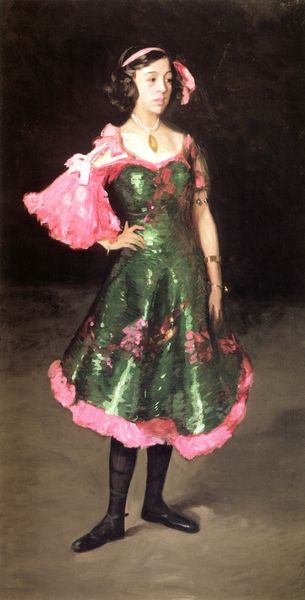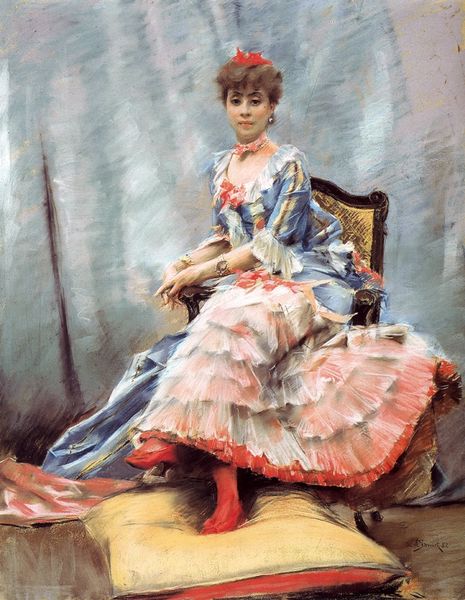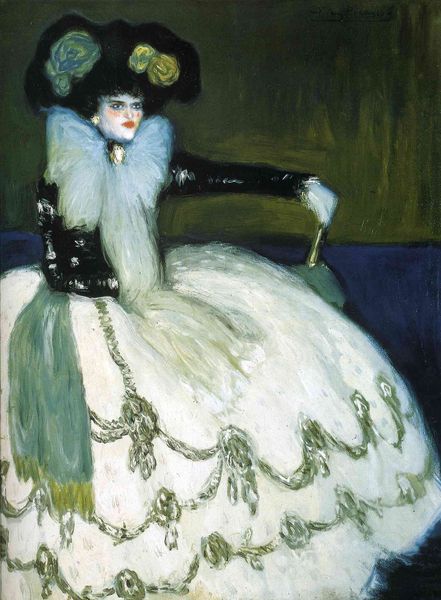
Copyright: Public domain
Curator: This painting, completed in 1906 by Boris Kustodiev, is entitled "Portrait of a Woman in Blue," also known as "Portrait P. Sudkovskaya." Editor: The textures! The silk seems almost iridescent. I'm also drawn to how much detail has gone into the materiality of the sitter's exquisite blue gown. Curator: Kustodiev emphasizes line and form, particularly in the dress's cascading layers. Note how the off-the-shoulder neckline creates a horizontal axis, balanced by the verticality of her figure, achieving pictorial harmony. Editor: But look closer. Beyond form, you see how labor-intensive its fabrication would have been? Someone hand-stitched every flounce, every rosette. That's crucial to understanding this representation of affluence. What’s also worth discussing is the source and potential location where the painting may have been produced. Curator: Interesting point, considering Kustodiev’s Symbolist leanings. I'd argue that the portraits hung on the wall behind, seemingly depicting other wealthy women, could act as aesthetic counterpoints, creating spatial depth and a hierarchy of gazes. The gaze of Sudkovskaya is much stronger. Editor: And think about the working conditions needed for the dress to be crafted. The seamstress might not live as regally as Sudkovskaya, although a dressmaker's skills could potentially lead to new connections within a hierarchical social circle. This makes me wonder how many attempts would the material have to endure during production, to meet quality requirements. Curator: That said, Kustodiev balances representation and idealization, nodding to the aesthetic conventions of Romanticism without wholly subscribing to them. The blue hues unite her figure with an atmospheric softness, conveying her youthful charm. Editor: Maybe, but if this audio guide wants to highlight craftsmanship, we must address the social conditions that allow such material excess in the first place. How labor practices sustain artistic creativity should always be acknowledged, regardless of Romantic idealism. Curator: An important reminder. Appreciating both formal properties and material realities is key to understanding an artwork’s lasting resonance. Editor: I agree. By revealing how the aesthetic and the economic intertwine, we empower viewers to perceive the portrait beyond mere surface appeal.
Comments
No comments
Be the first to comment and join the conversation on the ultimate creative platform.
